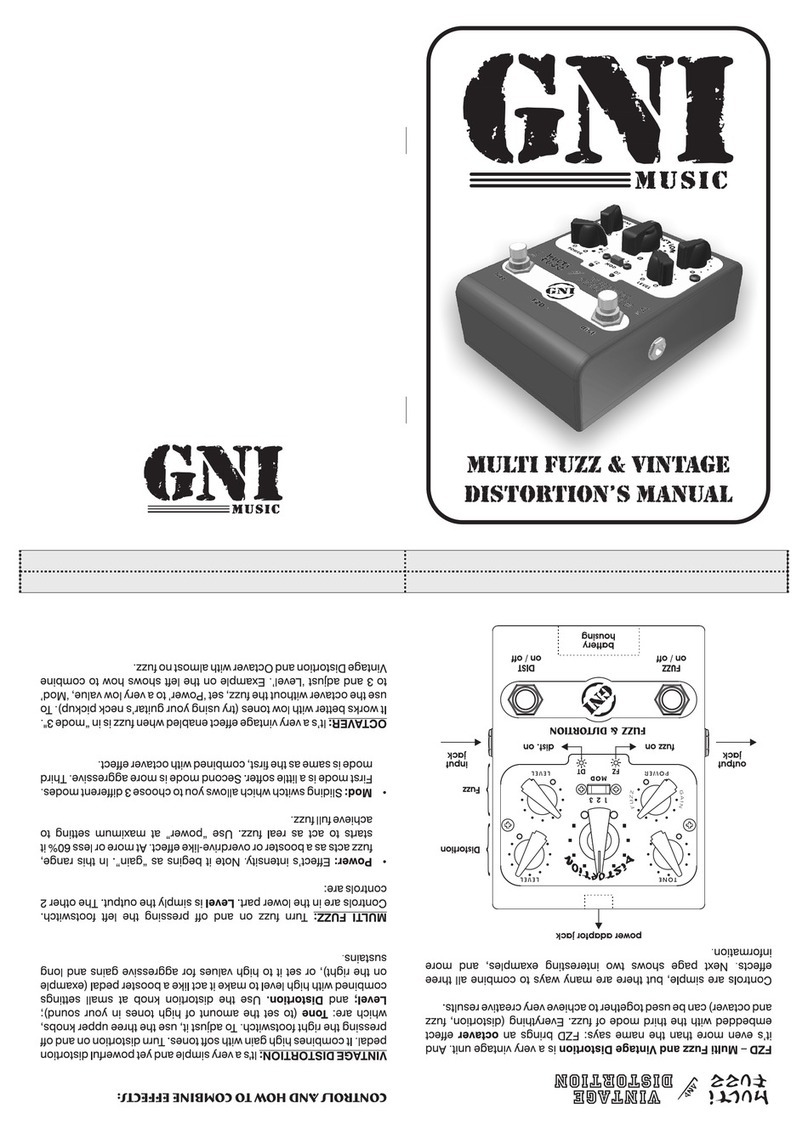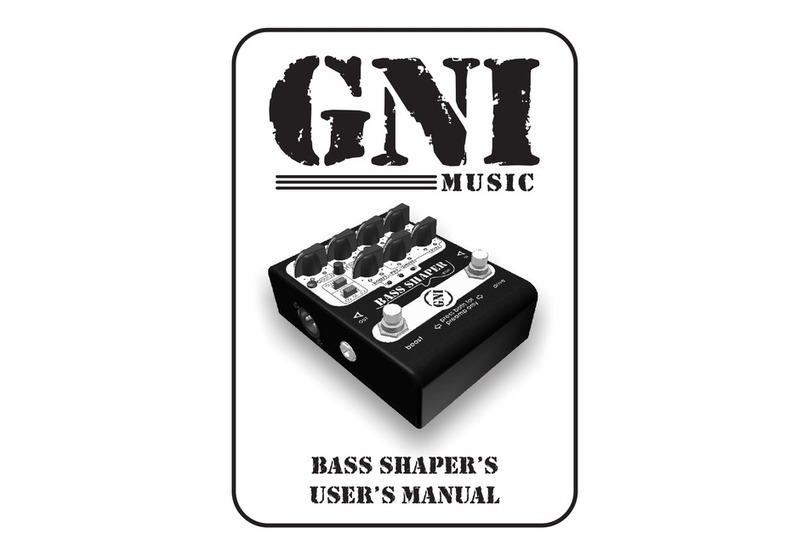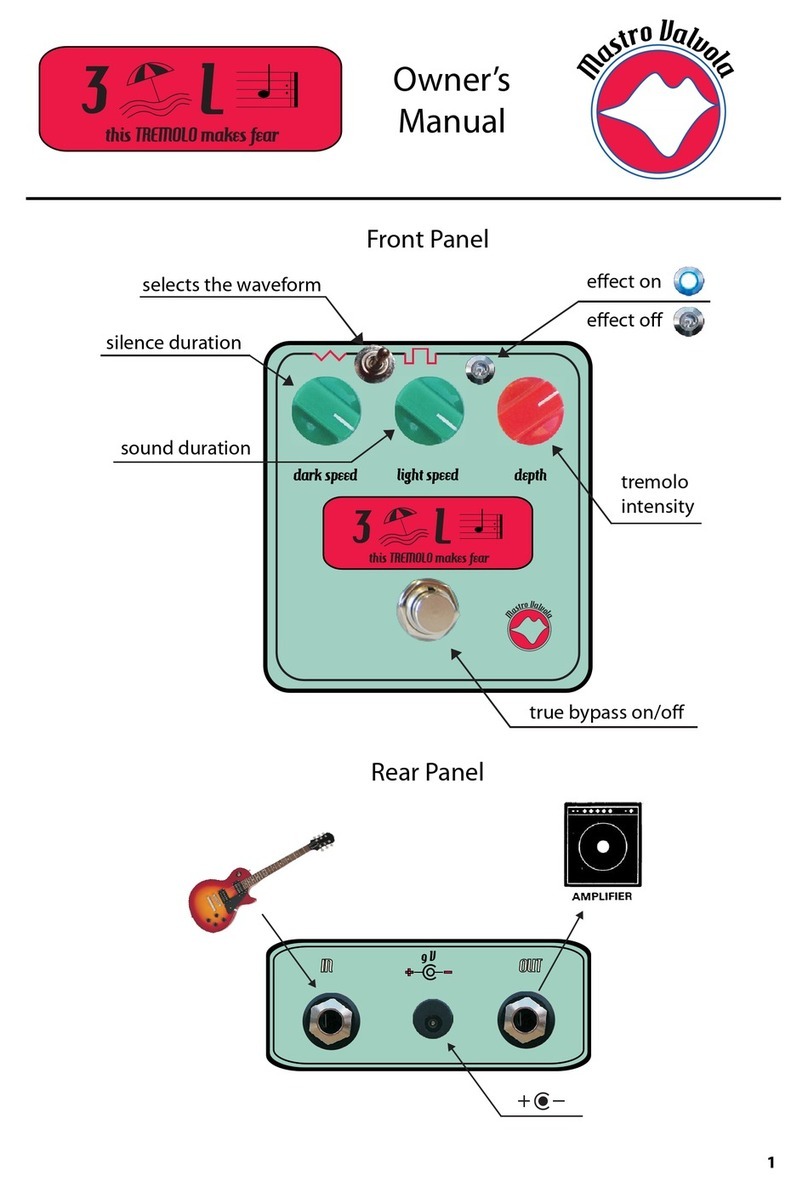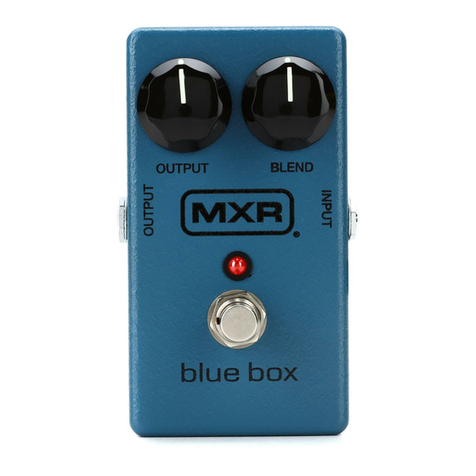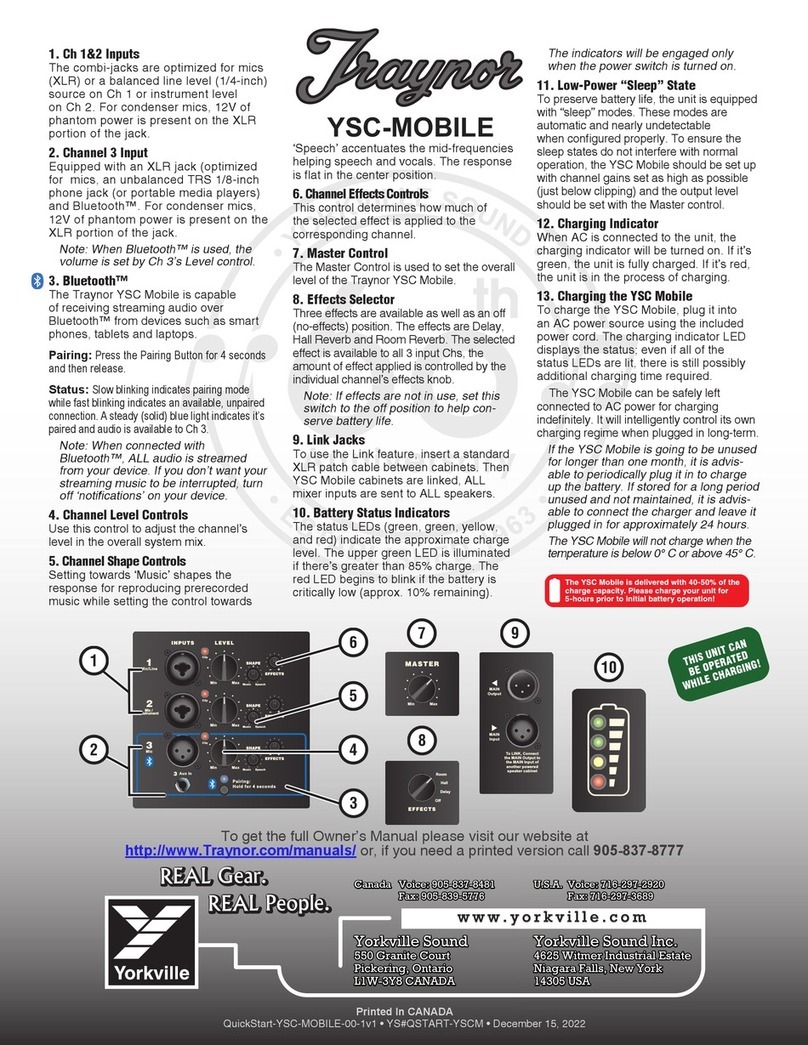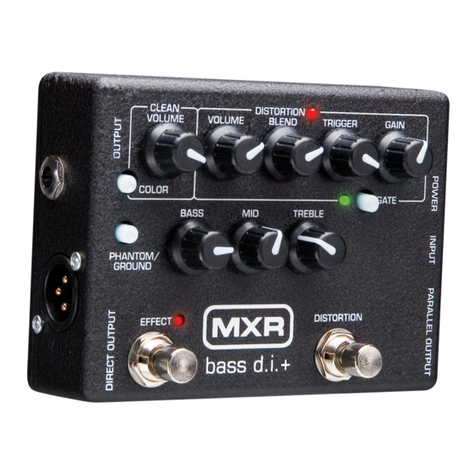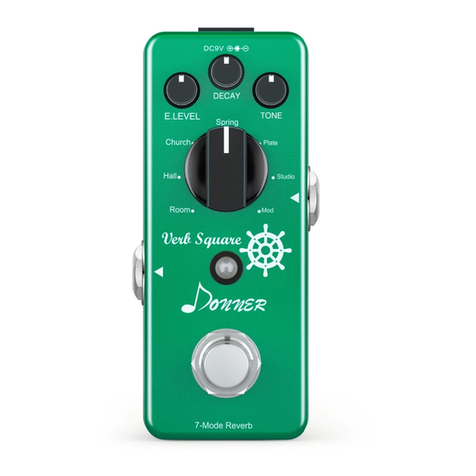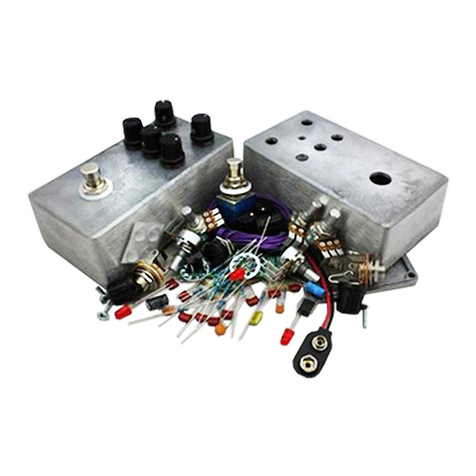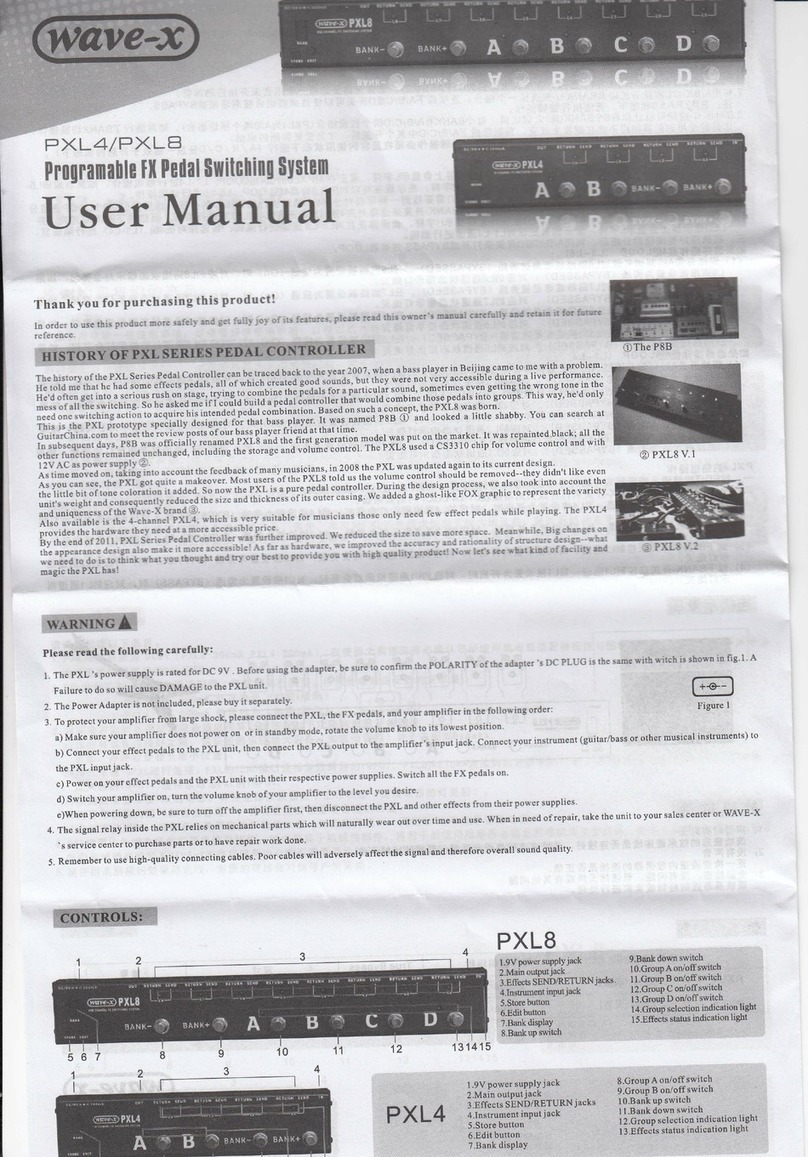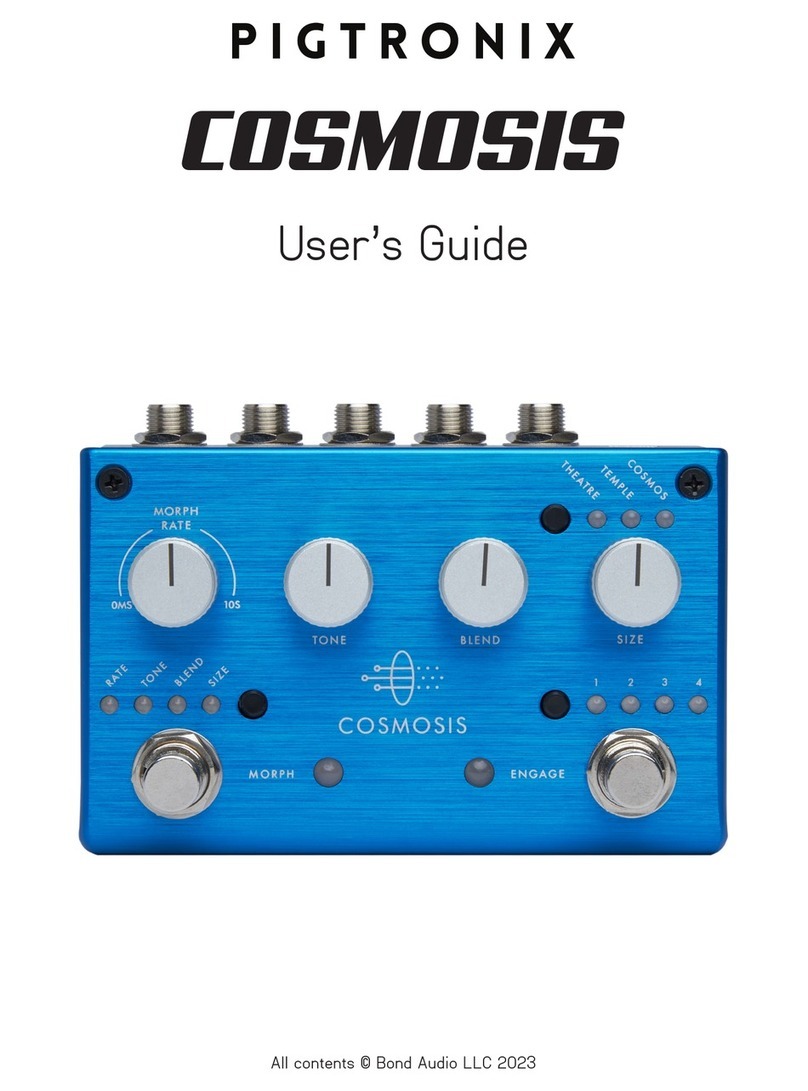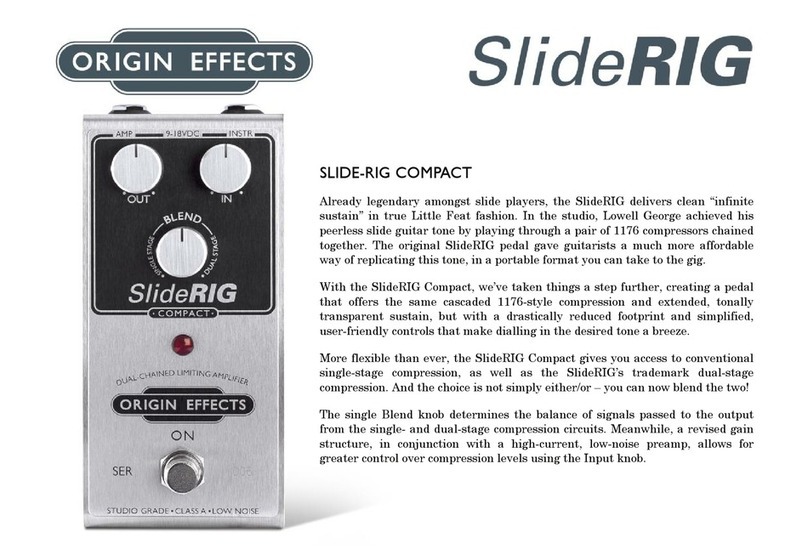GNI Phaser & Flanger User manual

Phaser & Flanger’s
user’s manual

Introduction
Thank you, and congratulations on your choice for GNI Music's products.
Lots of work from engineers and professional musicians were spent in
order to create really high-end pedals. These sections provide important
information concerning the proper operation of our pedals. Please read,
in order to feel assured you're ready to explore all available resources.
For more information and hints, check www.gnimusic.com.
Connections
Power:
All pedals covered in this book can be used with standard 9V batteries, or
DC power adaptors. These accessories are not included.
Installing battery:
Install 9V standard battery bellow the
pedal, as shown in the figure. Be careful
not to force the chord. Note that low
batteries can compromise the sound
quality, even when the effect is turned off
(bypass mode). Remove the battery when
your pedal is not in use.
Using DC adaptor:
The adaptor jack is in the back part of the unit.
Please ensure you have an adaptor complying
with the following specifications:
?9V, DC, regulated adaptor.
?Polarity according to the figure.
?300 mA (recommended).
9V, DC
WARNING: Unregulated or ‘switched mode’ supplies may
cause noise. Wrong tension values or reversed polarity
may cause permanent damage to the pedal, not
covered by warranty.

True Buffer Bypass (TBB)
When the effect is turned off, input signal passes to output through an
active (“opamp”) buffer, and a mechanical switch. Buffer lowers signal's
impedance, preserving its level and high tone contents. Mechanical
switches are used to eliminate the need for some electronic components
that usually degrade sound's quality in “pure-electronic” bypass pedals.
Please note that this bypass system requires power to work. Signal will
not pass if you are not using an adaptor or battery.
2 in 1
GNI’s Phaser & Flanger is a true two-in-one product, allowing you to use
both modulations at the same time. Incredible results can be achieved
this way. Note that GNI’s design allows you to comfortably press both
footswitches at the same time.
Input and output
Input jack accepts signals from the guitar or another effects unit. Output
jack is used to connect the pedal to the amplifier or another device. In
some cases these jacks serve as power switches, meaning your unit may
not turn on unless they are connected. This is an extra feature to save
battery in case pedal is not being used.
ADVICE: Cables are passive components with non-
negligible capacitance. They can possibly interfere
with sound's signal. In order to achieve better results,
make your connections with good quality cables.

Flanger
Phaser
phf - phaser & flanger
FLANGER
on / off
output input
battery housing
jack to 9V, DC,
regulated supply
flanger’s led
phaser’s led
PHASER
on / off
GNI
}
}
flanger’s
controls
phaser’s
controls
PHF brings 2 classic modulation effects in a single product. Each effect
has a complete and independent set of controls for maximum flexibility.
When combined (turned on simultaneously), they can generate
impressive results.
Each control will be explained ahead. Also, some suggested settings will
be shown.

PHF’S cONTROLS
Phaser and Flanger are effects created by superposing the instrument’s
signal with a phase-shifted copy of itself. The way to create the phase-
shifted wave is what makes both effects different. Due to the similarity,
most controls act the same way in both effects:
?Speed: controls the frequency of the “low frequency oscillator” (the
“effect wave”).
?Range: controls the amplitude of that same wave.
?Ress: Part of the phase-shifted signal is fed back into the effect,
creating “resonance”. This knob controls the intensity of resonance
you want in the sound.
?Mix: Intensity of the phase-shifted signal to be mixed with the clean
sound. Higher setting make the effect stronger.
“Osc.” and “Mod.” buttons are 2 special controls to the Flanger (they
don’t affect phaser!).
?
?Osc.: Determines how the low frequency oscillator works. When
pressed, speed knob no longer works, and range knob changes its
function, letting you choose a fixed point for the effect to work without
oscillation.
?Mod.: When pressed, changes the way the phase-shifted wave is fed
back into the effect. GNI called this alternate mode “talking flanger”, a
peculiar mode which somewhat resembles a “talking box”.

Sample Settings
Note that some of these suggestions generate sounds similar to those of
other effects, like tremulos, vibes and vibratos. They are not meant to be
perfect simulations of such effects, but simply worth trying possibilities.
Traditional settings. Flanger in “talking” mode; Phaser
resembles ‘Vibe’.
Fast Flanger resembles ‘Tremulo’;
Phaser is slow, with lots of high tones.
Flanger wth locked oscillator and
talking mode. Sounds low; Fast
Phaser.
Another interesting setting to use both
effects together.
Flanger resembles ‘reverb’; Phaser
can be used at the same time.

Troubleshooting
All pedals are tested before leaving GNI’s facility. If you are finding
difficulties, please pay attention to the following details. Most small
problems are easy to solve with a simple checklist:
?Insert both input and output jacks, or the pedal won turn on.
?Check if you used the correct sides for input and for output.
?If using DC adaptor, be sure it respects our specs. Reversed polarity,
wrong tension, etc. may damage the circuitry and compromise
warranty.
?If using batteries, be sure they are not discharged
?Check volume levels, wrong connections and broken cables.
?Keep your unit away from other electrical devices. TVs and other home
appliances can cause interference and noise.
?Don’t play very close to the amplifier, or directly facing it, in order to
avoid feedback noise.
If you’ve carefully checked your setup and problems persist, please
contact our technical representative at your country for further support
and warranty. If you can’t find our representative’s information, please go
to our website (www.gnipedals.com) and contact us directly.
Specifications
?Power supply: 9V battery, or adaptor according to our specs.
?Bypass mode: True Buffer Bypass
?Input impedance: 500 k?
?Output impedance: 5 k?
?Size: 62 x 141 x 110 (mm)
2.44 x 5.55 x 4.33 (in)
?Weight: 810g (1.8lb)
Specifications may change without notice.

Table of contents
Other GNI Music Pedal manuals
Popular Music Pedal manuals by other brands
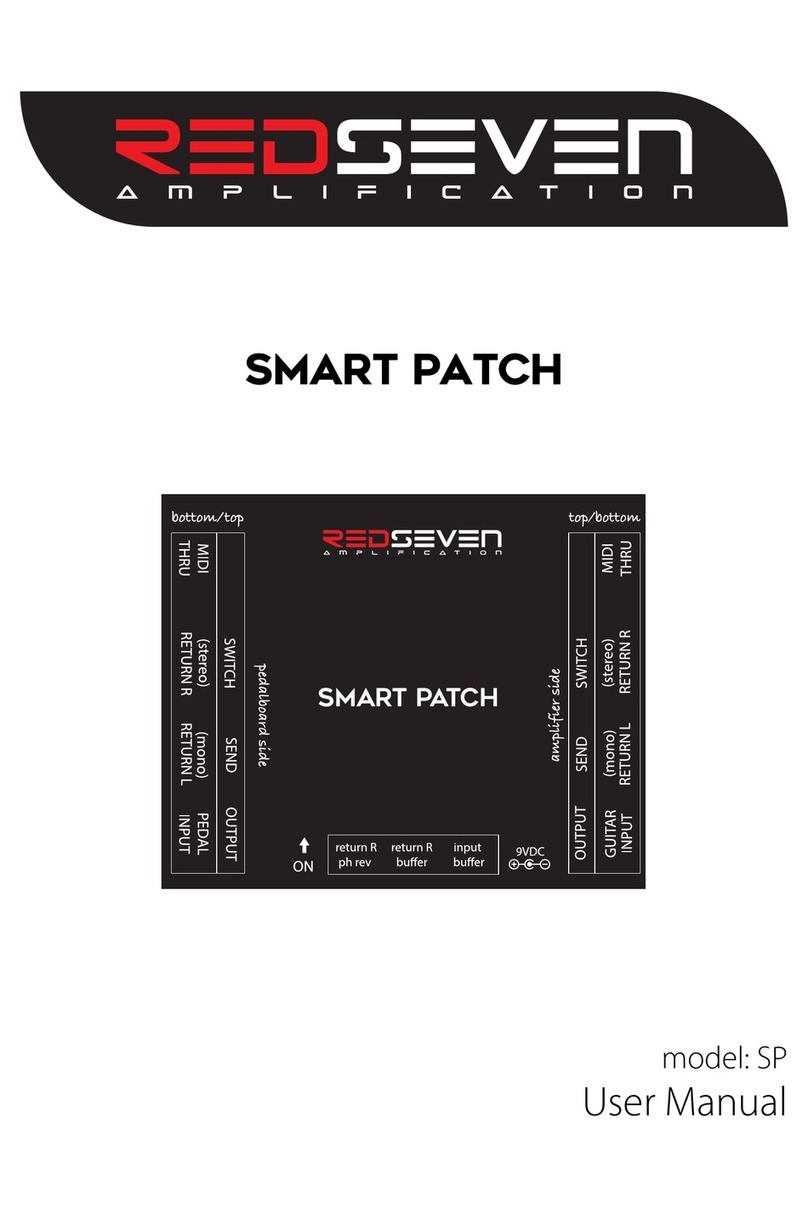
RedSeven Amplification
RedSeven Amplification SMART PATCH SP user manual

Maestro
Maestro FUZZ-TONE FZ-M user manual

Ibanez
Ibanez CS9 Stereo Chorus owner's manual

TC Electronic
TC Electronic Gravy TRI CHORUS & VIBRATO user manual
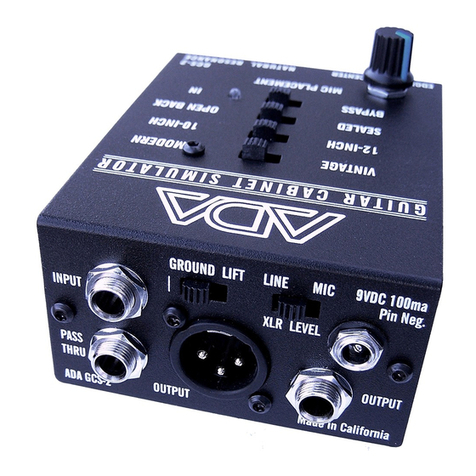
ADA Amplification
ADA Amplification GCS-2 user manual

FuzzDog
FuzzDog Pussy King manual
